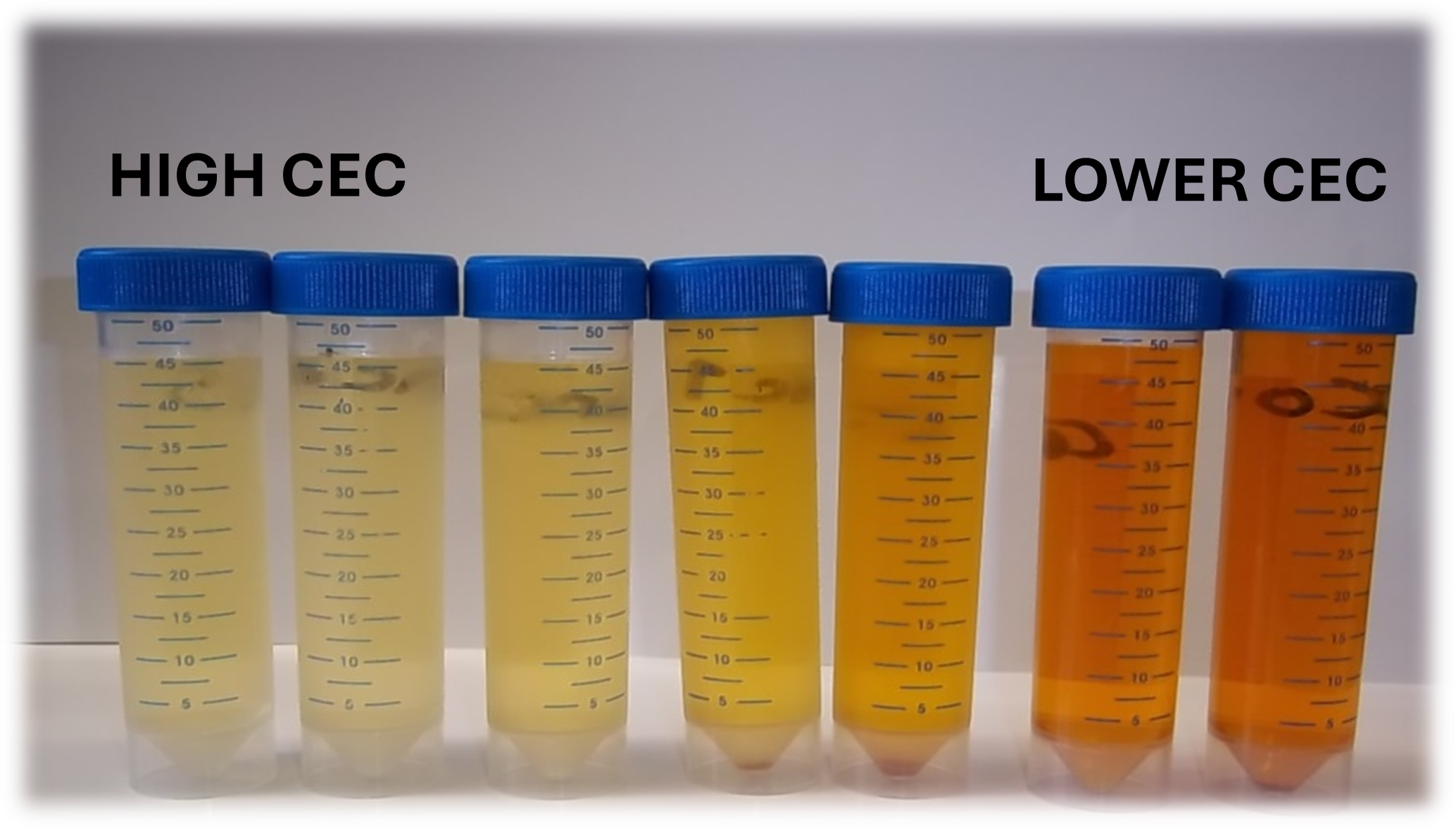There are multiple types of analysis that are used to measure the cation exchange capacity (CEC) of materials. In our lab our first, and preferred method, of determining CEC uses cobalt hexammine trichloride, whilst the second is the methlyene blue method.
The cobalt hexammine trichloride method is based on the ISO 23470 Standard wherein the exchangeable cations in the sample are replaced by trivalent cobalt hexammine ions. The CEC is calculated from the difference between the initial and final concentrations of cobalt solution which are determined using the analytical method of absorption colorimetry. This method requires 1.5 grams of sample (dry weight) and sample cleaning will be conducted in house to remove hydrocarbons, if necessary, before analysis. Samples are sieved to <250 microns before analysis. This method is UKAS accredited.

The second method is the methylene blue method which is based on the API protocol. For this analysis we require a minimum of 1 gram of sample (dried weight) which is sieved to <75 microns. The sample is placed in a conical flask and then boiled in a solution of hydrogen peroxide and sulphuric acid (pictured below left), before methylene blue is titrated into the flask in 1 ml aliquots (pictured below right). The CEC is taken when a corona forms around the droplet placed on the filter paper (pictured below centre).



Other CEC methods are available, please contact us for details.


